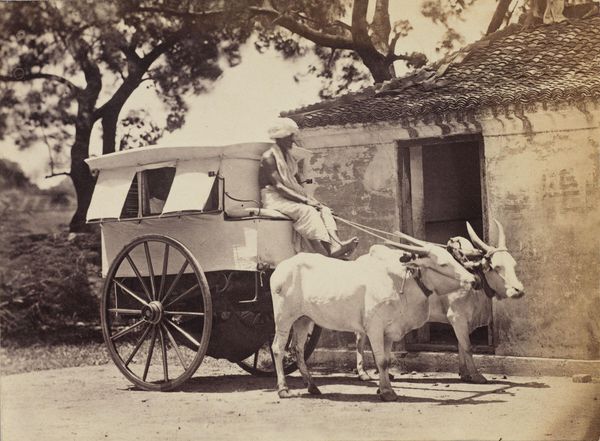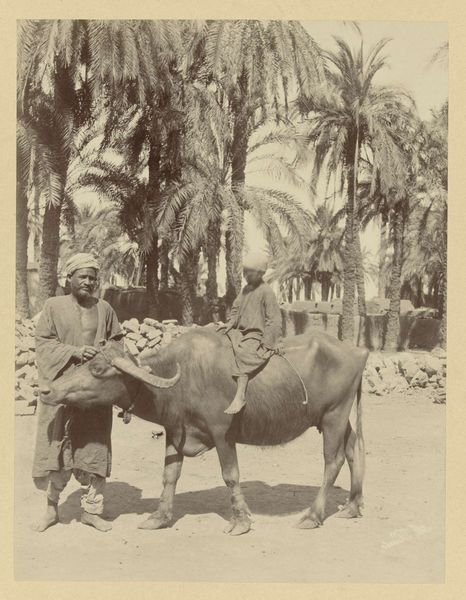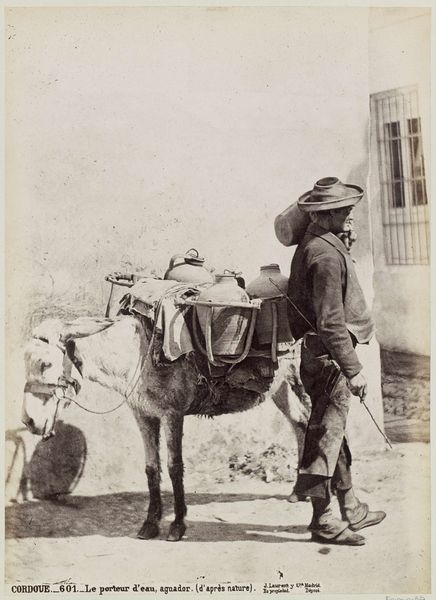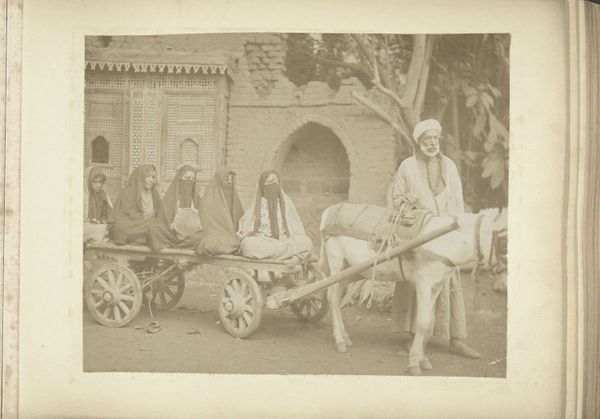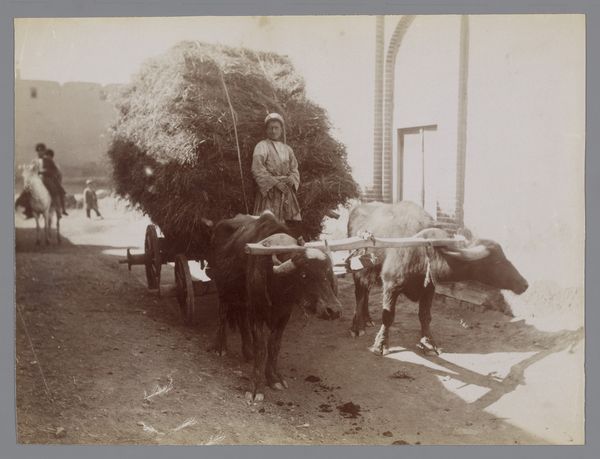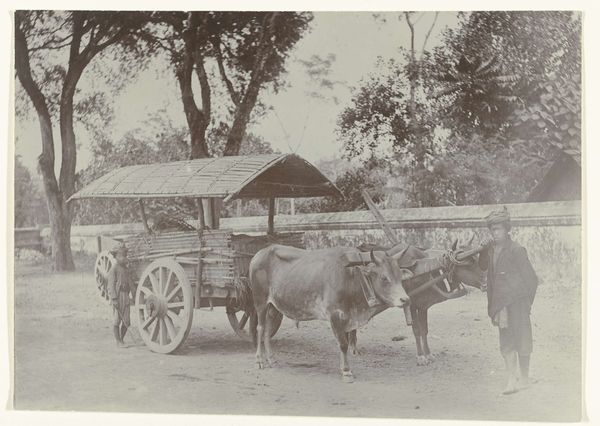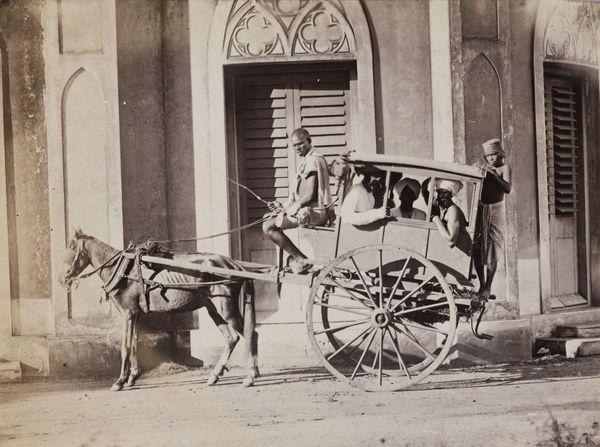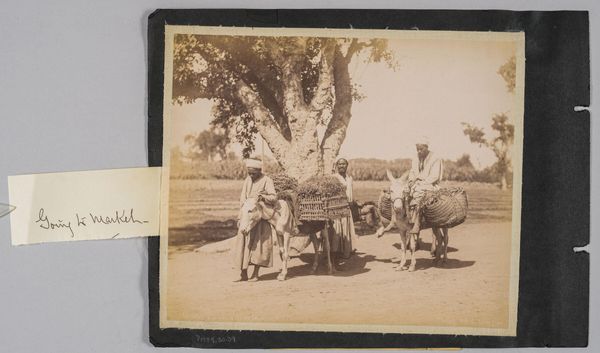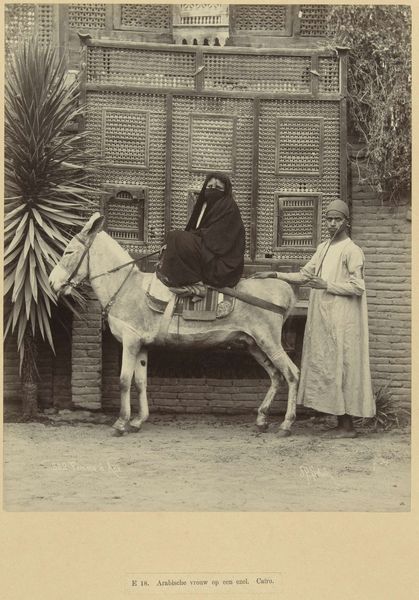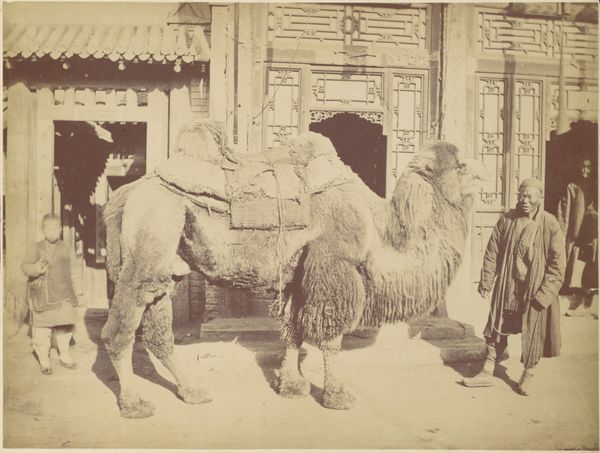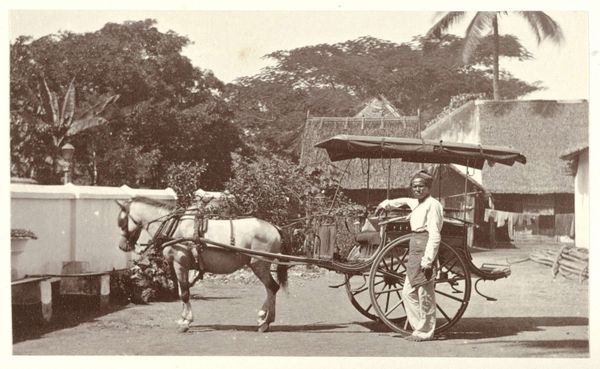
print, photography, gelatin-silver-print
#
print photography
#
16_19th-century
# print
#
landscape
#
photography
#
orientalism
#
gelatin-silver-print
Dimensions: height 179 mm, width 236 mm
Copyright: Rijks Museum: Open Domain
Curator: This gelatin silver print, attributed to Shepherd & Robertson and created between 1862 and 1864, captures “Men on a bullock cart in Rajasthan, India.” It’s a fascinating example of early photography encountering a new cultural landscape. Editor: It certainly is striking! The texture alone is wonderful – from the roughness of the cart’s wheels to the smooth hides of the oxen. It feels incredibly tactile, like I could reach out and touch the scene. Curator: Observe how the subjects are positioned, the composition directs our attention to the means of transport itself. The hand-crafted cart and powerful oxen highlight the labor required for mobility and trade in that era. What kind of readings does this placement offer you? Editor: It speaks volumes. The oxen, of course, have been sacred animals in India for centuries, representing strength, patience, and abundance. They are visually tied to the cart and its occupants in a display of working relationships within its wider cultural symbology. I can even observe the men’s clothing and headwear styles which differ among their social class, can't I? Curator: Precisely, we can view this photograph as an artifact documenting class and labor at the intersection of pre-industrial and early industrial economies. What do you make of the architectural setting? Editor: It frames the entire scene! I find the ornate door suggests status, doesn't it? Also, this photographic capture can be examined within the history of orientalism—it provides a window into an India perceived by westerners, charged with visual meaning and inviting scrutiny. Curator: Agreed. These visual codes provided information—and perpetuated narratives about labor, transportation, and society in the nineteenth century, contributing to Western audiences understanding about colonized places through images. Editor: So, what seems at first like a straightforward snapshot really unfolds to reveal multifaceted cultural and symbolic meaning. Curator: Indeed, by looking at the photographic print itself, as well as its production, we understand the history it carries of materials and hands meeting in 19th century Rajasthan. Editor: This print offers us an intimate look into a culture framed by symbol, labor, and lasting legacy, as understood from varied contexts.
Comments
No comments
Be the first to comment and join the conversation on the ultimate creative platform.
